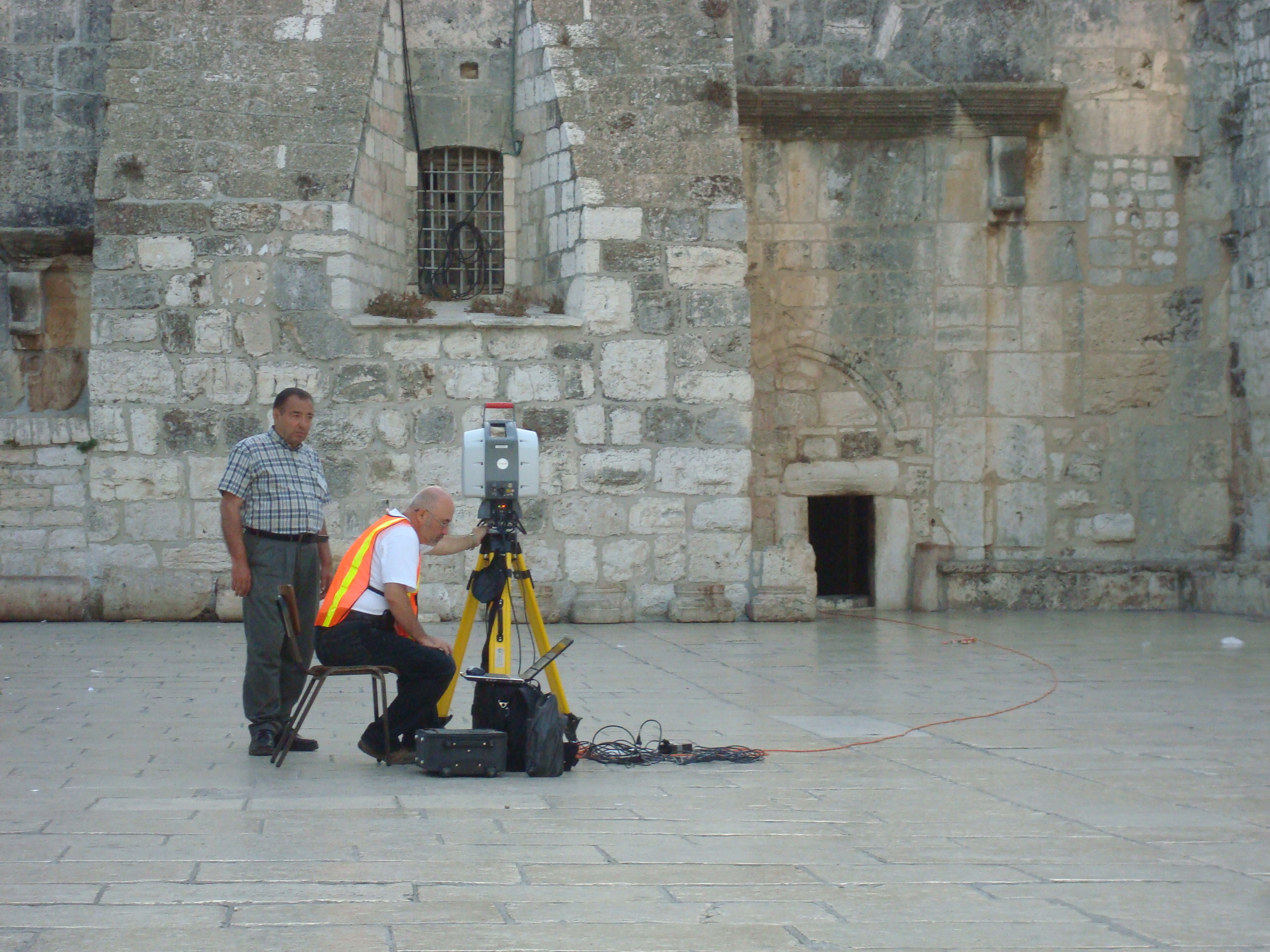Chance to exercise new metadataX software
BETHLEHEM—With stakeholders that include the Palestinian National Authority, Roman Catholic Church, Greek Orthodox Church and the Armenian Apostolic Authorities, it’s hard to overestimate the religious and political importance of the International Project for Survey, Study, Assessment and Conservation Plan for Church of the Nativity in Bethlehem. Metadata? How about 20 centuries worth? Yet Sorin Busuioc, president of SCDS, the firm that provided the laser scanning and 3D modeling of the church said to rest over the birthplace of Jesus Christ, says the job went very smoothly, with no difficulty getting permissions.
“All clergies were very responsive and supportive,” he says, speaking from his offices in Saint-Laurent, Quebec, Canada.
It was, however, something of a spiritual experience for Busuioc. “Performing professional work and spending so much time in the Church of the Nativity, in Bethlehem, was a great experience, honor and privilege,” he says. “You are walking everywhere around, in grottoes, chapels or Main Basilica, perhaps unconsciously sensing the penetrating spirit or searching the unreachable mystery, but fully conscious that you are not dreaming, yet centuries of history look down upon you.”
SCDS won the job in the first place because of its experience, Busuioc says, which includes more than 100 imaging projects performed in the last 10 years, including a continuous presence in the Middle East—UAE Qatar, Bahrain, Egypt—since 2003.
More than that, he says, it is SCDS’ specialization in laser scanning workflows, in managing and utilizing the data, that is attractive to clients.
“W have always regarded 3D laser scanning just as an opportunity to propose promoting, developing, and integrating improved workflows, expert systems, and dedicated tools and applications” in 3D imaging, he says.
This experience led to the release this past summer of metadataX, a software package that can be hosted locally or in the cloud and helps organizations manage their point cloud and 3D imaging data.
“It’s a data management, and project management, too,” Busuioc says. “We started with data management tools, which are sometimes beautiful but not so easy to be used by normal people. Our concept was to offer a data management tool and project management tool for “dummies,” something that can be used by any level of user, from an assistant up to scientists.
“It’s something very easy to use and has the traditional features used in data and project management, but we emphasize a lot on configuration management, keeping track of the changes in the files in a very easy mechanism.”
This allowed, for example, stakeholders in seven different countries all to be collaborating and pulling information from the same files simultaneously on the Church of the Nativity project. The deliverables, which consumed some 1,500 man hours, include floor deformations computations and color charts; general plans, including horizontal cross-sections of more than 10 elevations; vertical and longitudinal cross-sections; interior and exterior views; wall deformation charts; columns shaping, vertically and horizontally slicing; main and secondary roofs trusses and roof slopes; grottoes plans and tri-directional cross-sections; and a simplified 3D model of the Main Basilica to be used as a metadataX viewer.
This wide range of deliverables made designing and planning the optimum workflow very challenging, said Busuioc, especially when you consider “any structural piece, part, element or component of the Church of the Nativity is ‘vlauable,’ so that ‘delicacy’ is recommended everywhere.”
SCDS used a Leica ScanStation 2 and performed the scanning, modeling and information gathering between September 2010 and January 2011.
For a taste of the information pulled from the scan data, see the below video:






